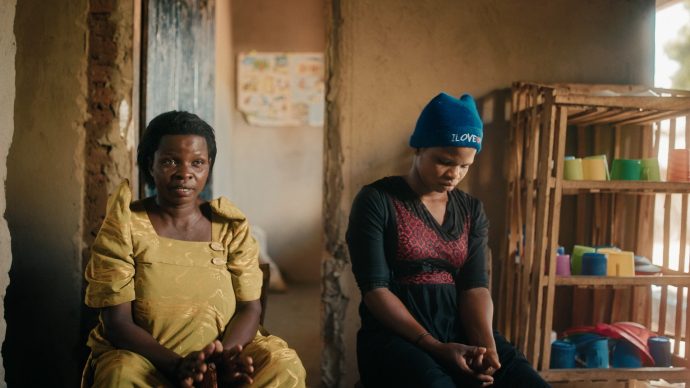Små nyopførte vandkraftværker forsyner nepalesiske byer med bæredygtig elektricitet ved at udnytte landets naturressourcer. Ifølge Verdensbanken, er dette afgørende for landets virksomheder.
WASHINGTON, February 5, 2014 (World Bank): The government of Nepal, with the assistance of the World Bank has been helping build micro hydro plants across rural Nepalese communities.
The plants are built and run by the communities, enabling sustainability, and bring much-needed electricity that powers industry and businesses.
The town of Darbang boasts (red. kan prale af) industries including a metal workshop, several furniture manufacturers, a cement block manufacturer, a noodle factory, poultry farms and dairy farms. All these industries have sprung up within the last four years, after the Ruma Khola Micro Hydro Power Plant came into operation in 2009.
The 51 kilowatt Ruma Khola micro-hydro supplies electricity to 700 households in five villages, including Darbang. This micro-hydro is constructed as part of the World Bank’s support to renewable energy generation in Nepal, implemented through the government of Nepal’s Alternative Energy Promotion Center (AEPC).
Just 100 meters from the micro-hydro power plant is a poultry farm owned by Laxmi Rasalli. 27-year-old Rasalli is raising 300 chickens.
She sells most of them in the busy meat shop that she has opened in the ground floor of her home. Electricity is a major requirement for a poultry farm. Chicks need continuous heat and light for 45 days until they grow.
“I could not have started raising these chickens if we didn’t have electricity,” says Rasalli.
Landsbysamfund tager ejerskab
The micro-hydro was built, and is run by the community.
With encouragement from AEPC, the community came together to build a micro-hydro that could meet the energy needs of five neighboring villages. Incorporating five villages, the community gathered a construction committee consisting of 89 people.
AEPC helped the construction committee with feasibility studies, and technical aspects of construction. The operators and managers to run the micro-hydro were also trained by AEPC. AEPC also makes a grant of Rs. 125,000 per kilowatt of electricity generated by the community.
“The availability of these grants encourages the community to get together and start work on securing their own energy future,” said Bijaya Wagle of AEPC.
This grant from AEPC, together with grants from the Village Development Committee, and District Development Committee all helped establish the micro-hydro, while the community contributed labor, and received a loan from the Agriculture Development Bank to secure the rest of the resources.
The micro-hydro construction committee was in charge, overseeing all aspects of construction, including raising funds, finding labor, and management oversight.
Every month, the micro-hydro raises Rs. 70,000 in utility bills paid by its users. The money raised is used to pay back loans, perform regular maintenance and pay the salaries of the operator on staff.
The nearby towns are bustling because electricity is generating new employment in the industries that have sprung up. To encourage industries, the micro-hydro currently has a minimal flat fee of Rs. 1,000 per month for industries. But demand is high, and the committee is considering charging by unit.
In Darbang, brothers Lak Bahadur and Jug Bahadur Kunwar moved from the remote village of Okharbot, an hour’s walk away from Darbang, to jointly establish the Kunwar Furniture Store, after the micro-hydro came into operation.
Today, the brothers employ seven people in their furniture store.
The furniture store runs three motors and various electrical equipment to manufacture furniture. Electricity has improved the quality of their work. “The finishing is better, we can make better designs with electrically powered machines,” says Lak Bahadur.
Projektet har spredt sig til 52 distrikter med over 1000 opførte vandkraftværker
Electricity has brought about a major change in the villages reached by this micro-hydro.
In addition to 22 industries powered through this plant, the town of Darbang boasts a higher standard of living for its residents. People may have a hard time physically accessing the outside world, but they have televisions, and even Internet to connect them to the world.
This micro-hydro project is a run-of-the-river project, sustainable and self-sustaining. Environmental impacts are positive, with electricity from the power plant replacing kerosene and wood burning in the villages, and contributing to emissions reduction.
Rapid growth of the communities near the Rum-Khola micro-hydro is an example of how access to sustainable energy can change the face of communities. Today, demand for electricity is far outstripping supply in Darbang and neighboring areas.
Throughout Nepal, AEPC has facilitated the construction of over 1,000 micro-hydro plants in 52 districts, repeating the success of Darbang throughout Nepal.
With its inclusive community driven model, the micro hydro initiative in Nepal is meeting energy needs of rural communities, and powering their economic development.
Villages like Darbang are also an example of how renewable, clean energy harnessed (red. styret) through community efforts can set the world on a path to a cleaner and more prosperous future.
Læs hele artiklen her:
http://www.worldbank.org/en/news/feature/2014/02/05/renewable-energy-powers-rural-nepal-into-the-future














